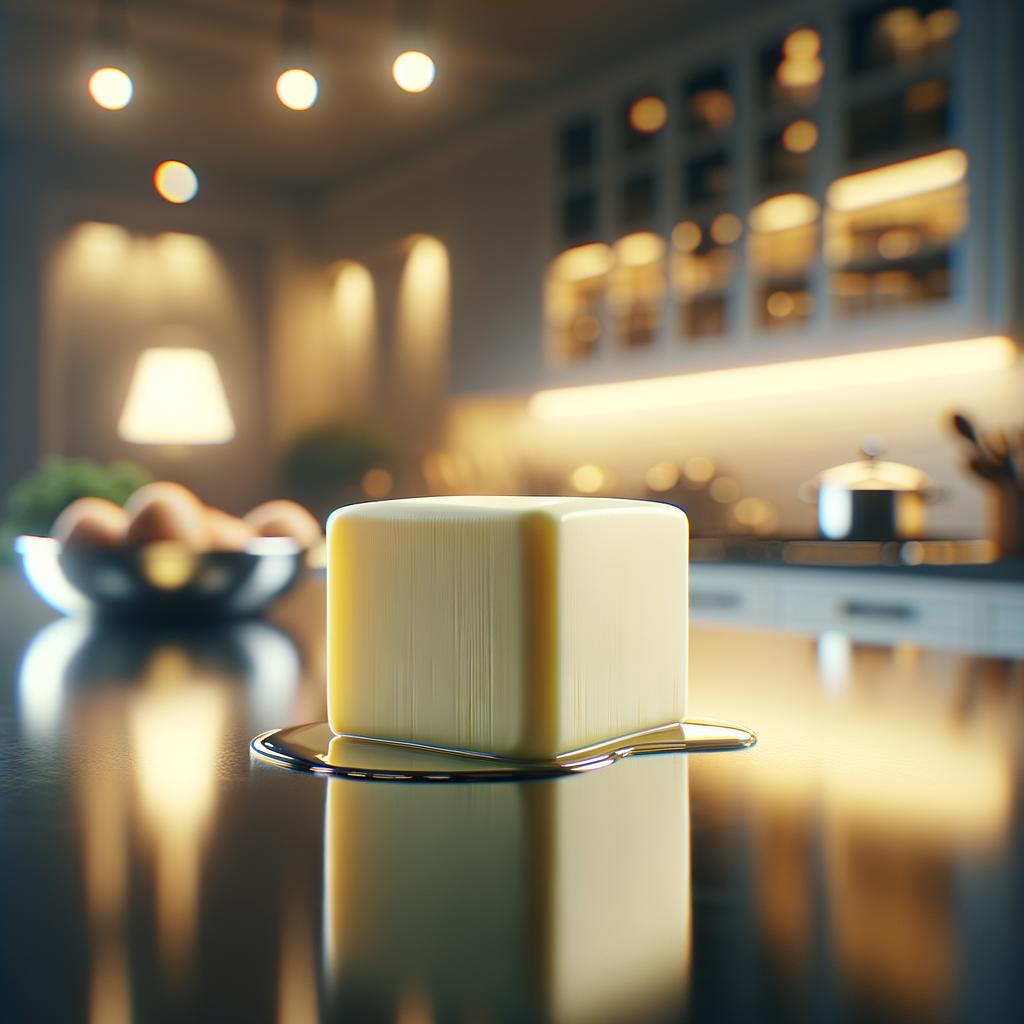Butter

Description Butter, a staple ingredient in kitchens worldwide, is a rich, creamy dairy product primarily made from cow's milk, although variants exist from the milk of other animals like goats, sheep, and buffalo. It has a soft, spreadable texture at room temperature and a solid, firm consistency when chilled. Its color ranges from a pale, almost white hue to a deep, golden yellow, depending on the diet of the dairy animal. The flavor profile of butter is a harmonious symphony of sweet, creamy, and slightly salty notes, with a hint of nuttiness that can vary in intensity. The unique characteristic of butter lies in its transformative ability - it can be churned, melted, browned, or clarified, each process giving it a distinct flavor and texture, setting it apart from other fats.
Primary Uses Butter is a culinary chameleon, used in a variety of cooking and baking applications. It lends a luxurious, velvety texture to sauces, a flaky tenderness to pastries, and a golden crust to baked goods. It's a key component in a multitude of cuisines, from the buttery croissants of France to the ghee-laden curries of India. Butter is also used to sauté, fry, and roast, enhancing the flavor of meats, vegetables, and even fruits. Beyond the culinary world, butter has been used in skincare for its moisturizing properties, and in certain cultures, it holds religious significance.
History The history of butter is as rich as its flavor. It dates back to around 2000 BC, with references found in ancient Indian scriptures and the Bible. It was a symbol of purity and prosperity, often used in religious ceremonies. The method of churning cream into butter has been passed down generations and across continents. Over time, butter has seen periods of both scorn and adulation. It was replaced by margarine in the mid-20th century due to health concerns, only to be redeemed and celebrated again for its natural, unprocessed character. Folklore around butter is abundant, from tales of it being a love charm in the Middle Ages to beliefs about its magical properties in Celtic traditions.
Nutritional Information Butter is a concentrated source of fat, providing about 100 calories per tablespoon. It is rich in saturated fats, which should be consumed in moderation. However, it also contains several fat-soluble vitamins, including vitamin A, D, E, and K. Butter is also a source of butyrate, a type of fat that can improve gut health and reduce inflammation. Compared to margarine, which is often made from processed vegetable oils and contains trans fats, butter is a more natural choice. However, like all good things, it should be enjoyed in moderation. Butter's rich, indulgent flavor and its ability to elevate a dish is a testament to the adage that sometimes, less is indeed more.

